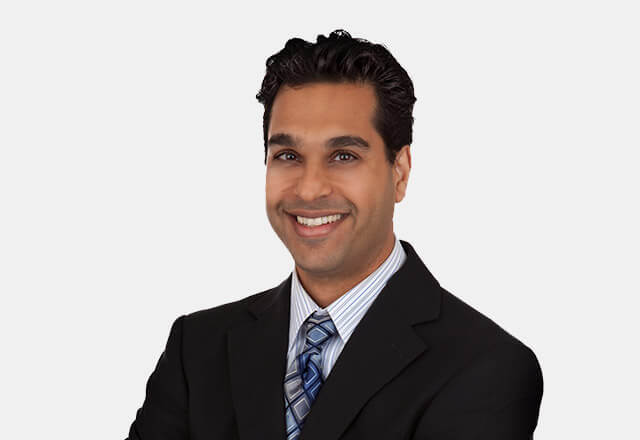
If you are thinking about laser eye surgery to say goodbye to glasses or contacts, you’ve probably heard of LASIK, PRK, and SMILE. But which one is the best fit for your eyes and lifestyle?
These three procedures all correct vision by reshaping the cornea, but they do it in different ways. Their differences can impact your recovery time, comfort, and overall results.
At InSight Vision Center in Fresno, we want you to feel confident and informed before making a decision that affects your eyesight for years to come.
So, let’s break down what you need to know about LASIK, PRK, and SMILE.
Difference Between LASIK vs PRK vs SMILE: A Quick Glance
|
Feature |
LASIK | PRK |
SMILE |
|
Procedure Type |
A flap is created on the cornea, and the laser reshapes the eye underneath. | The surface of the eye is treated directly without making a flap. | A small piece inside the eye is removed through a tiny cut. No flap is needed. |
|
Invasiveness |
Moderate. A flap is made on the eye’s surface. | More surface-level. The top layer is removed completely. | Minimal. Only a small opening, no flap. |
|
Recovery Time |
1–2 days. Vision improves quickly. | 3–7 days. It takes longer and may be uncomfortable. | 1–2 days. Fast recovery, like LASIK. |
|
Pain After Surgery |
Mild discomfort for a few hours. | Moderate discomfort for a few days. | Mild discomfort, usually short-lasting. |
|
Best For |
Most people with stable vision and sufficient corneal thickness. | People with thin corneas or dry eyes. | Active people and those prone to dry eyes. |
|
Dry Eye Risk |
Medium risk of dry eyes after surgery. | Lower than LASIK. | Lowest risk of dry eye among the three. |
|
Approved Since (USA) |
1998 | 1996 | 2016 |
|
Technology Used |
Femtosecond + Excimer lasers. One makes the flap, and the other reshapes. | Excimer laser only. It reshapes the cornea after removing the surface layer. | Femtosecond laser only. Creates and removes corneal tissue via a small cut. |
What Is LASIK Eye Surgery?
Laser-Assisted In Situ Keratomileusis is referred to as LASIK. The fundamental concept is that a surgeon makes a thin flap on the cornea, which is the transparent front portion of the eye. After this flap is carefully raised, the tissue underneath is reshaped by a laser to treat astigmatism, nearsightedness, and farsightedness.
The flap is reshaped and then repositioned, where it sticks by itself without the need for stitches. It is among the most well-known and widely used laser eye operations.
Learn more about LASIK services here!
When Do You Choose LASIK Eye Surgery?
LASIK might be the right choice for you if:
- Your prescription has been stable for at least a year.
- Your corneas are thick enough to create a flap safely.
- You want a fast recovery and quick vision improvement.
- You don’t have chronic dry eye issues.
- You are looking for a minimally painful procedure with minimal downtime.
What are the Benefits of LASIK Eye Surgery?
LASIK has several benefits, including:
- Quick Process: Typically, the operation takes 15 minutes for both eyes.
- Fast Results: Within a day, many people report a significant improvement in their vision. Read more about LASIK recovery time here.
- Minimal Discomfort: Because of the numbing drops, you experience little to no pain.
- Good Success Rate: The majority of patients attain 20/25 vision or above.
- Long-Term Effects: The cornea’s alterations are irreversible.
What are the Risks of LASIK Eye Surgery?
Like any surgery, LASIK comes with some risks:
- Dry Eyes: Some patients experience temporary or even long-term dryness.
- Glare and Halos: You might notice glare, halos around lights, or double vision, especially at night.
- Flap Complications: Rarely, problems with the corneal flap can occur.
- Under or Overcorrection: Sometimes, a second procedure (enhancement) is needed to fine-tune vision.
- Infection or inflammation: Although rare, these can happen and require treatment.
Read our complete guide on LASIK surgery.
What Is PRK Surgery?
PRK, or Photorefractive Keratectomy, is an effective laser vision correction surgery that predates LASIK. Instead of making a flap, PRK removes the very thin outer layer of your cornea (called the epithelium). Then, an excimer laser reshapes the corneal tissue underneath to correct vision problems. The surface layer naturally grows back over a few days after surgery.
Also Read: LASIK vs. PRK: Key Differences, Benefits, and Process
When Do You Choose PRK Surgery?
If your corneas are too thin or uneven for LASIK, PRK can be a better choice.
- You suffer from or are prone to dry eyes.
- You work in a profession that increases the risk of eye injury or lead an active lifestyle.
- You wish to prevent complications from flaps.
- You have specific surface imperfections or corneal scarring.
What are the Benefits of PRK Eye Surgery?
The benefits include:
- No Flap: Eliminates flap-related risks.
- Good for Thin Corneas: It can be performed when LASIK isn’t safe.
- Lower Dry Eye Risk: It often causes fewer dry eye symptoms than LASIK.
- Stable Results: Long-term vision correction is excellent.
- Suitable for Athletes: No flap means less risk of flap displacement during physical activities.
What are the Risks of PRK Eye Surgery?
The flip side of PRK includes:-
- Extended Healing Period: It may take a week or longer for visual recovery to occur.
- Discomfort: For a few days, patients may feel mild pain or irritability.
- Temporary Foggy or Fuzzy Vision: Vision may change while mending.
- Risk of Infection: Because the surface layer is removed, the risk of infection is marginally higher than with LASIK.
- Light Sensitivity: Some patients might become sensitive to light during their recovery period.
What Is SMILE Eye Surgery?
Small Incision Lenticule Extraction is referred to as SMILE. It is a more recent, minimally invasive eye procedure that was authorized in the United States in 2016. A tiny lens-shaped tissue fragment known as a lenticule is created inside your cornea by SMILE using a femtosecond laser.
The surgeon then removes this lenticule through a tiny incision, changing the shape of your cornea to correct your vision. It is less invasive than LASIK since no flap is made.
When Do You Choose SMILE Eye Surgery?
SMILE may be ideal if:
- You have nearsightedness (myopia) with or without astigmatism.
- You want a quick recovery with minimal discomfort.
- You are concerned about dry eye problems.
- You have an active lifestyle or play contact sports.
- You want a flapless procedure.
What are the Benefits of SMILE Eye Surgery?
The following are the major benefits amongst many other advantages of SMILE eye surgery:-
- Minimally Invasive: No corneal flap means fewer risks.
- Less Dry Eye Risk: The small incision preserves corneal nerves.
- Fast Recovery: Most patients return to normal activities within a day or two.
- Stable and Predictable Outcomes: High patient satisfaction rates.
- Reduced Complications: Lower chance of flap-related issues and infections.
What are the Risks of SMILE Eye Surgery?
Possible risk factors associated with SMILE eye surgery are as follows:-
- Limited Treatment Range: Currently, only myopia and astigmatism can be treated.
- Visual Recovery: Some patients may notice that vision takes slightly longer to fully stabilize compared to LASIK.
- Not Widely Available: Not all eye centers offer SMILE yet due to specialized equipment.
- Not Suitable for Everyone: Some eye conditions or prescriptions may not qualify for SMILE.
Eyes on the Future: A Podcast on LASIK, SMILE & More with Dr. Poulsen
This informative podcast covers everything from eye diseases and safe corrective eye surgical procedures to candidacy, complication rate, and recovery.
Hear from a trusted ophthalmologist in Fresno – Dr. Eric J Poulsen talk about all the surgical options you have to get rid of bothersome eyeglasses or contacts and learn more about the latest ophthalmology treatments like the smile surgery, corneal crosslinking, monovision LASIK surgery, implantable contact lenses, and the latest developments in cataract surgery.
Know the right treatment for your vision problem, how the surgical procedure is performed, and potential outcomes while also exploring other types of procedures appropriate for your situation, and get the best advice.
Podcast Link – Eye Disease- Eric Poulsen, MD by Central Valley Physicians
Which Eye Surgery is Best for You?
Ultimately, the most suitable procedure for you depends on your unique eye health and lifestyle. There’s no one-size-fits-all answer. The best way to find out which laser eye surgery fits you best is to schedule a comprehensive eye exam and consultation.
Our experts at InSight Vision Center in Fresno evaluate your eye health, corneal thickness, vision goals, and lifestyle needs to recommend the safest and most effective treatment for your vision correction journey.
Ready for Clear Vision?
Experience the freedom of life without glasses or contacts. Book your LASIK consultation today at Insight Vision Center and take the first step towards a brighter, clearer future.
When it comes to LASIK vs PRK vs SMILE, each procedure has its pros and cons. Your decision should be based on thorough knowledge and expert advice tailored specifically to you.
Whether you want quick recovery, minimal invasiveness, or have special eye conditions, InSight Vision Center is here to guide you every step of the way. Don’t settle for less when it comes to your eyes. Get the care and attention your vision deserves!

Dr. Azhar I. Salahuddin is an ophthalmologist and is fellowship-trained in cornea, external diseases, and refractive surgery. Dr. Salahuddin has been performing cataract surgery for over 19 years and specializes ocular reconstruction, corneal transplantation surgery as well as vision correction through a variety of intraocular lenses. Dr. Salahuddin is board-certified by the American Board of Ophthalmology and was trained at Boston University.

